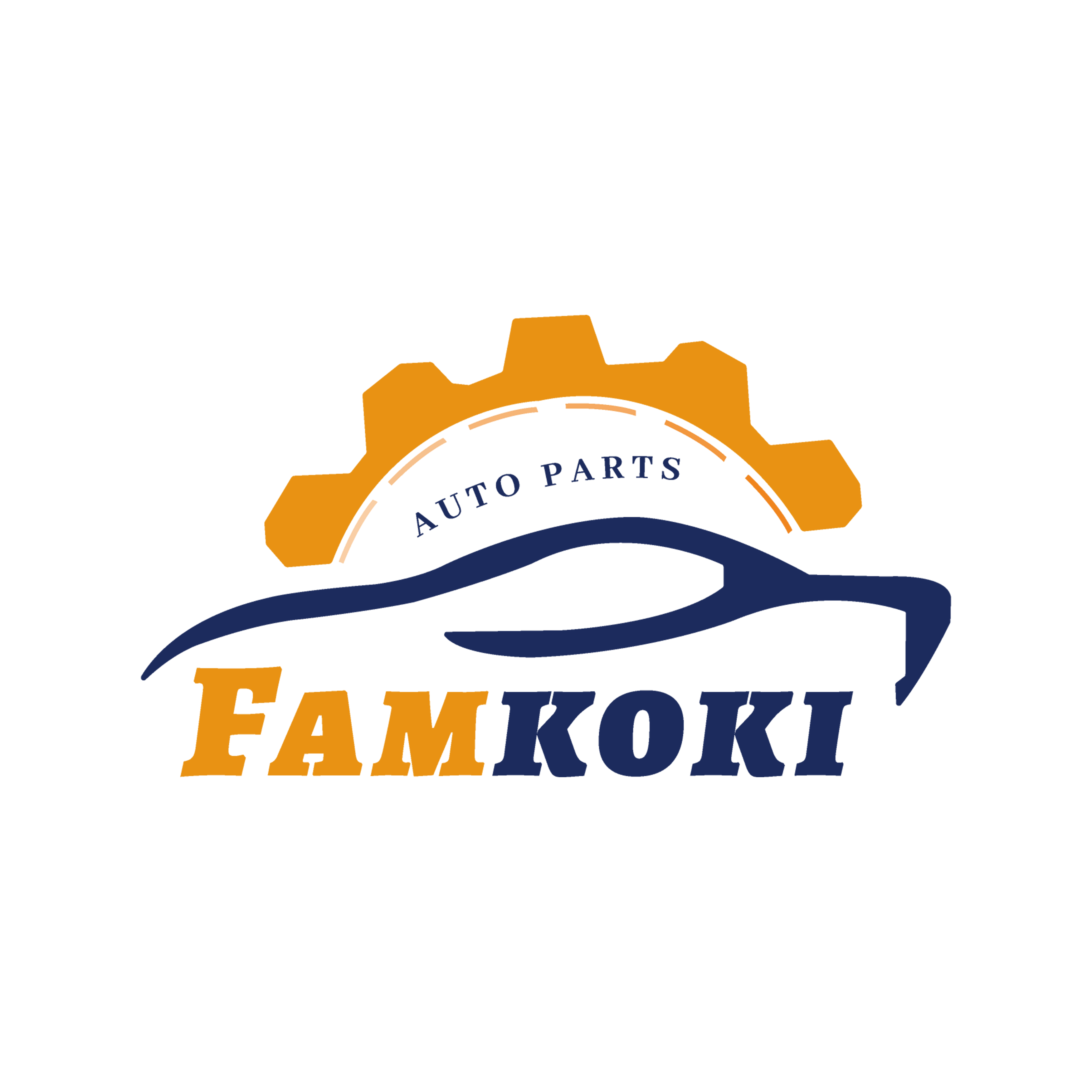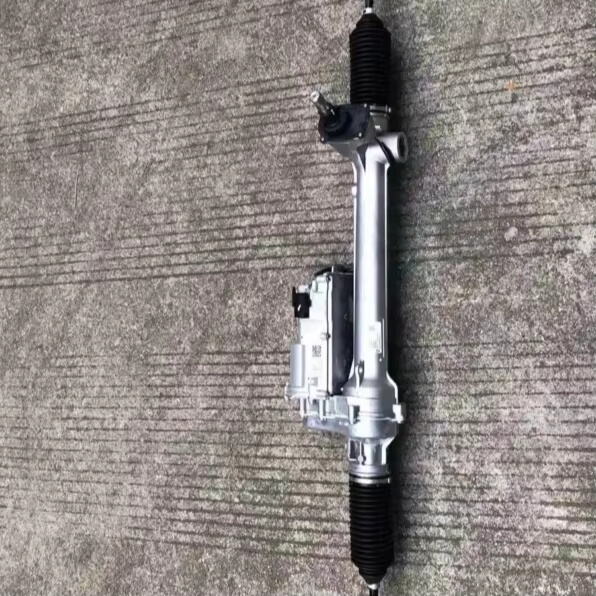Why Steering Columns Matter for Customized Control
The Role of Steering Columns in Vehicle Dynamics
Steering columns play a vital role in vehicle dynamics by acting as the primary interface between the driver and the vehicle's control mechanisms. They significantly affect maneuverability and responsiveness, making them essential for an optimal driving experience. When well-designed and correctly positioned, steering columns influence various aspects of driving, including comfort, handling, and safety. A study focusing on ergonomic steering columns revealed that they can substantially reduce driver fatigue, especially during long rides. This reduction not only enhances driver comfort but also boosts overall efficiency and safety on the road.
Integrating ergonomic design into steering columns ensures a seamless driver interaction, thereby improving vehicle dynamics. An ergonomic steering setup promotes ease of use, allowing drivers to maintain control effortlessly even during extended trips. This functionality is crucial, as it minimizes strain and maximizes alertness, contributing to safer driving conditions. By prioritizing the driver's comfort and minimizing physical exertion, steering columns become more than just a mechanical component; they become an integral part of a vehicle's dynamic performance.
Personalization vs. Performance Balance
Customized steering columns offer drivers the ability to optimize their driving position, creating a balance between comfort and control. Personalization allows for the adjustment of the steering setup to suit individual preferences, enhancing both the ergonomic fit and the driving experience. However, it's essential to recognize that an overemphasis on personalization may compromise performance, which is why manufacturers must strike a careful balance.
Too much customization without considering performance could result in handling issues or reduced vehicular efficiency. Reports from industry experts emphasize that drivers who have the ability to modify their steering columns generally report higher satisfaction levels and improved driving performance. This satisfaction is linked to the fine-tuning of their steering setup, which caters to personal comfort while maintaining optimal control and safety. As such, manufacturers must prioritize finding the right equilibrium between personalization and performance to offer steering columns that cater to diverse customer needs while ensuring reliability and efficiency.
Types of Steering Columns for Precision Control
Tilt Steering Columns: Flexibility for Ergonomics
Tilt steering columns are a key feature in modern vehicles, providing vertical adjustment that enhances driver comfort. This flexibility allows drivers to customize their driving position, accommodating various body types and preferences, making it an ergonomic asset. Studies indicate that the tilt capability significantly improves driving posture, reducing strain during extended trips. However, implementing tilt mechanisms requires ensuring smooth operation without sacrificing structural integrity, which remains a priority for manufacturers to balance flexibility with safety.
Telescopic Columns: Adjustable Reach and Comfort
Telescopic columns offer both vertical and horizontal adjustments, allowing for a more personalized and precise fit for drivers. This adaptability is crucial for maintaining optimal ergonomics, as drivers can adjust the steering column to suit their current posture or switch preferences. Consumer reports consistently highlight the value of telescopic columns for drivers who frequently alternate between multiple vehicles, as these columns offer a seamless transition, enhancing comfort and safety on the road.
Fixed Columns: Simplicity and Structural Integrity
Fixed steering columns are famed for their robustness and simplicity, attributes that make them favorable in performance-oriented vehicles. While these columns lack adjustability, they offer enhanced rigidity, a crucial factor for maintaining stability at high speeds. Experts suggest that the straightforward design of fixed columns leads to decreased maintenance costs and a reduced risk of mechanical failure, appealing features for performance-driven users who prioritize reliability and durability.
Universal vs. Retrofit: Customization Complexity
Universal steering columns present a one-size-fits-all solution but might not cater to specific preferences of particular vehicle types. Conversely, retrofit columns are customized to individual vehicles, allowing tailored fitting but requiring complex installation and integration with existing systems. Manufacturers face the challenge of balancing the broad appeal of universal solutions with the detailed customization provided by retrofit options, which is crucial to meet diverse consumer demands effectively. Amidst these options, steering column compatibility with various setups, as demonstrated by products like the IDIDIT Pro-Fab Universal Steering Column, highlights the ongoing innovation in the sector.
Material Choices and Durability Considerations
Steel vs. Aluminum: Strength vs. Weight Trade-offs
Choosing the right material for steering columns involves assessing the trade-offs between strength and weight. Steel is renowned for its high strength and durability, making it a reliable choice for structural integrity in vehicles. However, the heavier weight of steel can contribute to increased fuel consumption and reduced agility. On the other hand, aluminum offers a lighter alternative, which can enhance vehicle performance by improving acceleration and handling dynamics. Manufacturers often compile performance data to illustrate how these material choices impact vehicle dynamics and driver experience, helping buyers make informed decisions.
Impact of Build Quality on Longevity
The build quality of steering columns is a key factor that directly correlates with their longevity and reliability, which ultimately impacts the overall vehicle lifespan. High-grade materials and meticulous manufacturing processes play a significant role in minimizing wear and tear over time. Reports within the industry reveal that well-crafted steering columns often outlast lower-quality products, sometimes boasting a lifespan significantly beyond the norm. This underlines the importance of prioritizing quality construction to ensure long-term vehicle performance and owner satisfaction.
Corrosion Resistance for Harsh Environments
Corrosion resistance is a crucial consideration for steering columns, especially those operating in harsh climates or environments, such as coastal areas. Exposure to moisture and salt can severely deteriorate structural integrity if not adequately addressed. Consequently, materials and coatings must be carefully selected to resist such conditions. Rigorous testing standards for corrosion resistance help manufacturers ensure their products meet industry specifications and cater to consumer needs. Ensuring effective moisture protection and adherence to these standards is essential for maintaining the longevity and functionality of steering columns in demanding conditions.
Key Customization Features to Prioritize
Adjustable Height and Angle Mechanisms
Investing in adjustable mechanisms in steering columns allows drivers to fine-tune their steering position for maximum comfort and control. This adaptability is crucial as it accommodates varying body types and preferences, allowing for a more personalized driving experience. As the diversity of drivers' needs grows, more vehicle manufacturers are adopting these features to boost customer satisfaction and stand out in a competitive market.
Compatibility with Aftermarket Steering Wheels
Compatibility with aftermarket steering wheels is a critical feature for those who wish to personalize their vehicles further, tailoring both aesthetics and functionality. This option is highly sought after by car enthusiasts looking to enhance their vehicle's look, feel, and performance. Industry surveys indicate a growing trend in drivers who prioritize steering solutions that are compatible with aftermarket options, reflecting the evolving customization demands in the automotive sector.
Integration with Advanced Driver-Assist Systems (ADAS)
Integration with Advanced Driver-Assist Systems (ADAS) in steering column technology is vital to enhancing driver safety and aiding navigation in modern vehicles. Ensuring a seamless interaction between steering columns and ADAS components facilitates optimal response and functionality, which is crucial for maintaining high safety standards. Manufacturers must adhere to stringent regulations and testing protocols to assure that these integrations do not compromise overall vehicle safety and performance.
Safety Standards and Certification Requirements
FMVSS Compliance for Roadworthiness
Compliance with the Federal Motor Vehicle Safety Standards (FMVSS) is crucial for ensuring driving safety and vehicle reliability. These standards set forth specific requirements designed to protect drivers and passengers, covering various components, including steering columns. Manufacturers must regularly update their steering column designs to align with evolving FMVSS guidelines, which ensures roadworthiness and adherence to safety benchmarks. Statistical data suggests that vehicles meeting FMVSS have lower accident rates attributed to steering failures, underscoring the importance of these regulations in safeguarding lives on the road.
Crash-Tested Designs for Impact Protection
Crash-tested steering column designs are essential for minimizing potential injuries during vehicular accidents. By adhering to rigorous testing protocols, these designs provide critical impact protection and meet stringent regulatory standards. Studies indicate that vehicles equipped with crash-tested steering columns significantly reduce the risk of serious injury in a crash. This emphasis on safety through meticulous design and testing instills confidence in vehicle occupants and ensures that automotive manufacturers prioritize passenger well-being.
Signal Integrity in Drive-by-Wire Systems
Ensuring signal integrity in drive-by-wire systems is critical for the safe and effective operation of modern vehicles. These sophisticated electronic systems rely on a seamless flow of signals to function optimally, ensuring accurate steering responses. Therefore, steering columns must be engineered to minimize signal loss, thereby enhancing the vehicle's overall responsiveness. Industry benchmarks and studies consistently highlight the significance of robust signal integrity for reliability in electronic steering systems, making it a paramount consideration in the design of contemporary vehicles.
FAQ Section
What is the importance of ergonomic steering columns?
Ergonomic steering columns reduce driver fatigue, enhance comfort, and boost overall efficiency and safety during long drives. They allow seamless driver interaction for improved vehicle dynamics.
How do customized steering columns balance performance and personalization?
Customized steering columns optimize driving positions for comfort and control, but manufacturers must balance personalization with performance to avoid handling issues and maintain vehicular efficiency.
What are the different types of steering columns?
Steering columns include tilt, telescopic, and fixed types, each offering different advantages in terms of flexibility, simplicity, and ergonomic adaptability.
Why is material choice important in steering column manufacturing?
Material choice impacts strength, weight, and vehicle performance. Steel offers durability, while aluminum enhances acceleration and handling due to its lightweight nature.
How does integration with ADAS enhance steering column functionality?
Integration with Advanced Driver-Assist Systems enables seamless interaction, optimizing safety and navigation while maintaining high safety standards.
Table of Contents
- Why Steering Columns Matter for Customized Control
- Types of Steering Columns for Precision Control
- Material Choices and Durability Considerations
- Key Customization Features to Prioritize
- Safety Standards and Certification Requirements
-
FAQ Section
- What is the importance of ergonomic steering columns?
- How do customized steering columns balance performance and personalization?
- What are the different types of steering columns?
- Why is material choice important in steering column manufacturing?
- How does integration with ADAS enhance steering column functionality?
 EN
EN
 AR
AR
 FR
FR
 KO
KO
 PT
PT
 RU
RU
 ES
ES


